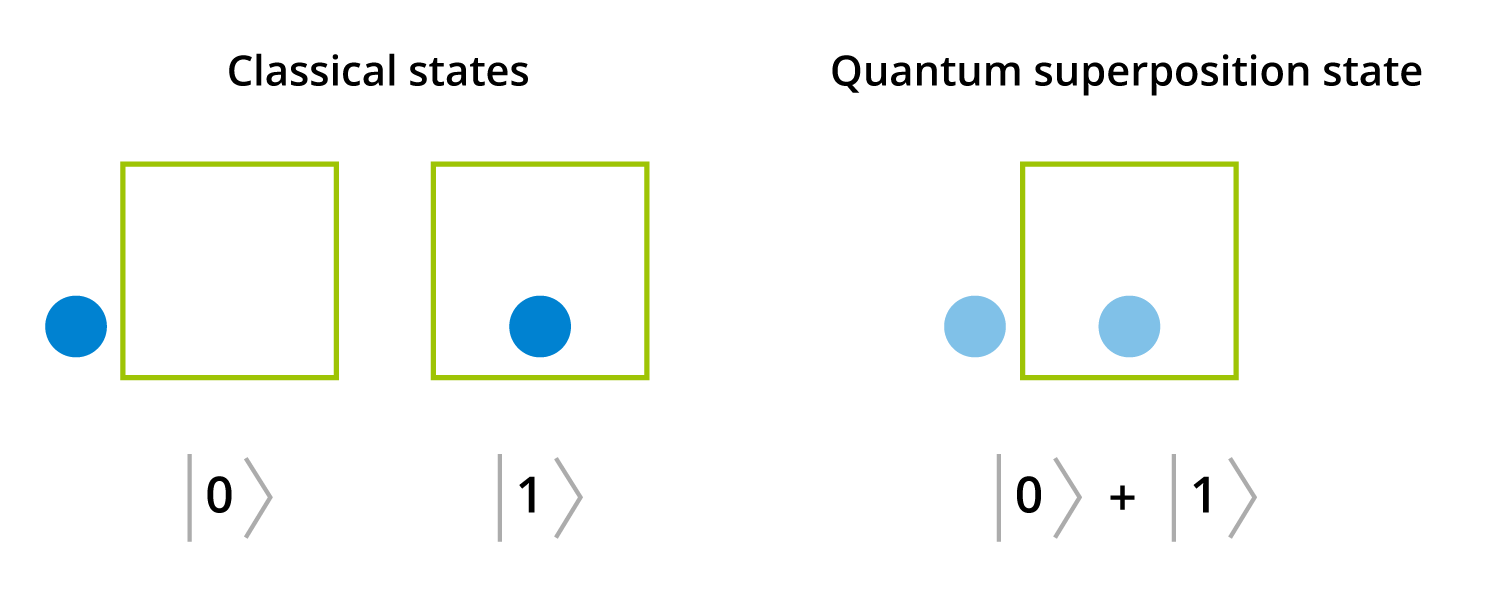Section I: Overview of Quantum Computing
Quantum computing is an emerging technology that relies on quantum mechanics to perform calculations not possible for even the most powerful classical supercomputers.15 To better understand what is behind quantum computing’s exponentially faster processing times, the National Institute of Standards and Technology (NIST) notes that it may help to think of computers like “microscopic cities” with electricity running through roads using “logic gates” and “bits.”16
- Logic gates: The streets in these “microscopic cities” contain gates, known as logic gates, which operate similar to gates on a road that move up and down to direct the flow of traffic by either allowing or blocking vehicles from passing.17 Logic gates enable computers to function, as they essentially follow a similar up and down movement to allow or block flows of electricity.18 Logic gates are used to make circuits and, in turn, circuits are used to form central processing units (CPUs), which are the principal parts of computer systems.19
- Bits: Flows of electricity that travel through logic gates produce outputs known as bits. Bits are what classical computers use for storing and processing information. Bits are configured in only two formats: 0 and 1, which represent the flow of an electrical signal either being allowed through the logic gate or blocked by it.20 Logic gates are arranged sequentially, with electricity traveling through each gate like a flowchart. This flow of information through gates is what forms circuits. Information flowing through circuits allows computers to carry out logical functions, such as mathematical calculations.21
For quantum computing, this flow of electricity involves “quantum logic gates,” “qubits,” “reversibility,” “superposition,” and “entanglement.”
- Quantum Logic Gates and Qubits: Quantum logic gates are the basic building blocks of quantum computers. They can control and direct incoming electricity levels, to result in the desired output. Quantum logic gates are also the mechanisms that enable non-binary flows of information in quantum computers to produce quantum bits (or qubits). Qubits exist in more than one state simultaneously, such that they represent not just as a 0 or 1, but instead represent both 0 and 1 at the same time.22 Qubits allow quantum computers to process multiple possibilities simultaneously.23
- Superposition: The simultaneous existence of more than one configuration—or state—at one time is a fundamental principle of quantum mechanics known as superposition.24 In the case of quantum computing, qubits in superposition are represented by a complex linear combination of a 1 state and a 0 state. As described further below, the ability for quantum computers to consider multiple states simultaneously facilitates finding a solution to problems that might otherwise seem to have an impossibly large number of potential outcomes.
- Reversibility: Reversibility means that all the outputs quantum logic gates produce can be reversed or undone.25 Theoretically, the fact that qubits can go in reverse and essentially “re-trace” their flows, or steps, means that information that passes through quantum gates can be retrieved, which is not currently possible in classical computers.26
- Entanglement: The power of superposition is amplified by another central principle of quantum physics known as entanglement, where qubits in superposition are capable of generating even more results by interacting with one another.27 Entanglement is a special connection between two pairs of quantum elements where the changing state of one element impacts others, even at a distance.28 By entangling qubits, the number of represented states can rise exponentially, making it feasible to both explore a massive number of possibilities instantly and also conduct parallel calculations on a scale beyond the reach of classical computers.29
Superposition

Source: Investor Place
Financial institutions have generally avoided purchasing or attempting to build their own quantum computer because of the challenges and expenses associated with purchasing and maintaining quantum systems.30 Instead, firms typically rent access to quantum machines hosted by cloud service providers.31 Accessing quantum computing through the cloud can come in the form of subscription models or, more flexible, pay-per-use access models.32 Leveraging quantum computers through the cloud may enable economies of scale, sharing of resources at lowers costs, and increased access.33
